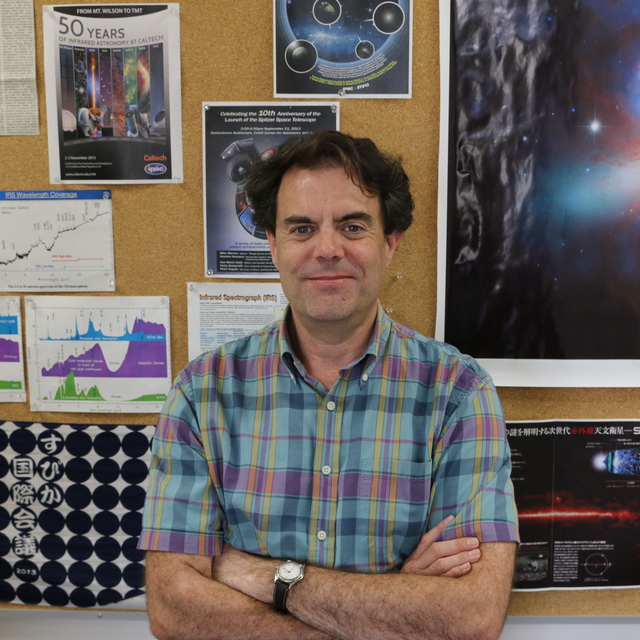October
2023
•
2023ApJ...955..136M
Authors
•
McKinney, Jed
•
Pope, Alexandra
•
Kirkpatrick, Allison
•
Armus, Lee
•
Díaz-Santos, Tanio
•
Gómez-Guijarro, Carlos
•
Franco, Maximilien
•
Elbaz, David
•
Hayward, Christopher C.
•
Inami, Hanae
•
Popping, Gergö
•
Xiao, Mengyuan
Abstract
•
The surface densities of gas, dust, and stars provide a window into the physics of star formation that, until the advent of high-resolution far-IR/submillimeter observations, has been historically difficult to assess among dusty galaxies. To study the link between IR surface densities and dust properties, we leverage the Atacama Large Millimetre/Submillimetre Array archive to measure the extent of cold dust emission in 15 z ~ 2 IR-selected galaxies selected on the basis of having available mid-IR spectroscopy from Spitzer. We use the mid-IR spectra to constrain the relative balance between dust heating from star formation and active galactic nuclei (AGNs), and to measure emission from polycylic aromatic hydrocarbons (PAHs), small dust grains that play a key role in the photoelectric heating of gas. In general, we find that dust-obscured star formation at high IR surface densities exhibits similar properties at low and high redshift, namely, local luminous IR galaxies (LIRGs) have comparable PAH luminosity to total dust mass ratios as high-z galaxies, and star formation at z ~ 0-2 is more efficient at high IR surface densities despite the fact that our sample of high-z galaxies is closer to the main sequence than local LIRGs. High star formation efficiencies are coincident with a decline in the PAH-to-IR luminosity ratio reminiscent of the deficit observed in far-IR fine-structure lines. Changes in the gas and dust conditions arising from high star formation surface densities might help drive the star formation efficiency up. This could help explain the high efficiencies needed to reconcile star formation and gas volume densities in dusty galaxies at cosmic noon.
Links




